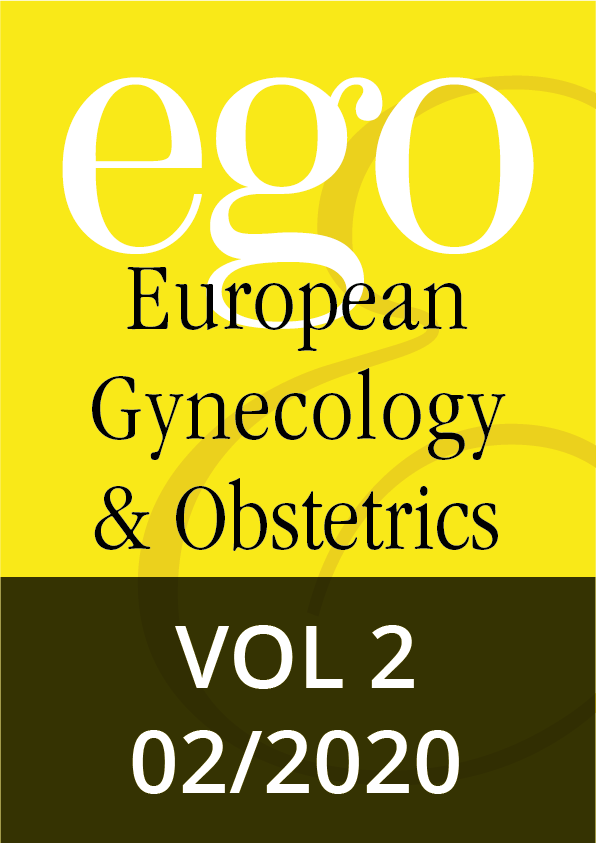Editorial, 03-04 | DOI: 10.53260/EGO.202011
Editorial, 071–072 | DOI: 10.53260/EGO.202021
Short reviews, 073–076 | DOI: 10.53260/EGO.202022
Short reviews, 077–081 | DOI: 10.53260/EGO.202023
Short reviews, 082–089 | DOI: 10.53260/EGO.202024
Short reviews, 090–093 | DOI: 10.53260/EGO.202025
Case reports, 094–097 | DOI: 10.53260/EGO.202026
Case reports, 098–100 | DOI: 10.53260/EGO.202027
Short reviews, 10-15 | DOI: 10.53260/EGO.202013
Case reports, 101–104 | DOI: 10.53260/EGO.202028
Original articles, 105–110 | DOI: 10.53260/EGO.202029
Original articles, 111–115 | DOI: 10.53260/EGO.2020210
Original articles, 116–122 | DOI: 10.53260/EGO.2020211
Original articles, 123–126 | DOI: 10.53260/EGO.2020212
Original articles, 127–131 | DOI: 10.53260/EGO.2020213
Orgasm – a psychophysiology-based approach to hormonal and non-hormonal medical strategies to manage orgasmic disorders in women
Abstract
Background: Orgasm is a complex psychophysiological component of the human sexual response that involves different organ systems and central nervous system regulatory processes. As part of the human sexual response, it is strongly linked to sexual desire and arousal.
With regard to hormonal and non-hormonal pharmacological approaches, most studies reporting treatment effects on orgasmic dysfunction are in women with concomitant desire and arousal disorders. On the basis of their action, these approaches can be divided into the following types.
• Enhancement of the afferent part of the spinal orgasmic reflex by improving the intensity of the sexual stimulus and/or increasing the receptivity to the stimulus (this demands structural integrity of vulva and vagina, blood flow to the vulva and the vagina)
These effects are provided by local estrogens, testosterone, Dihydroepiandrosterone (DHEA), non-hormonal lubricants,
medicaldevices.
• Enhancement of the efferent pathway by noradrenergic/cholinergic activation and/or enzymatic action on the guanosine monophosphate (GMP) system.
Drugs acting at this level are mainly PDE-5 inhibitors, vasodilators, specific prostaglandins
• Medical interventions (drugs) targeting brain centers which either increase central excitation or decrease nervous inhibition
Systemic estrogen/androgens act via central nervous receptors directly and indirectly through activation of neurotransmitters; centrally-acting drugs include bupropion, buspirone, flibanserin and melanocortin
These approaches can also be used in women without desire and arousal disorder.
In addition to these approaches, for women experiencing sufficient arousal but reporting inhibition at the plateau level,
medical devices like Eros and Fiera have shown pro-orgasmic effects.
Keywords: Female orgasm disorder, medical treatment., neurophysiology
Citation: Bitzer J., Orgasm – a psychophysiology-based approach to hormonal and non-hormonal medical strategies to manage orgasmic disorders in women, EGO European Gynecology and Obstetrics (2020); 2020/02:10-15 doi: 10.53260/EGO.202013
Published: April 1, 2020
ISSUE 2020/02

Editorial, 03-04 | DOI: 10.53260/EGO.202011
Editorial, 071–072 | DOI: 10.53260/EGO.202021
Short reviews, 073–076 | DOI: 10.53260/EGO.202022
Short reviews, 077–081 | DOI: 10.53260/EGO.202023
Short reviews, 082–089 | DOI: 10.53260/EGO.202024
Short reviews, 090–093 | DOI: 10.53260/EGO.202025
Case reports, 094–097 | DOI: 10.53260/EGO.202026
Case reports, 098–100 | DOI: 10.53260/EGO.202027
Short reviews, 10-15 | DOI: 10.53260/EGO.202013
Case reports, 101–104 | DOI: 10.53260/EGO.202028
Original articles, 105–110 | DOI: 10.53260/EGO.202029
Original articles, 111–115 | DOI: 10.53260/EGO.2020210
Original articles, 116–122 | DOI: 10.53260/EGO.2020211
Original articles, 123–126 | DOI: 10.53260/EGO.2020212
Original articles, 127–131 | DOI: 10.53260/EGO.2020213
